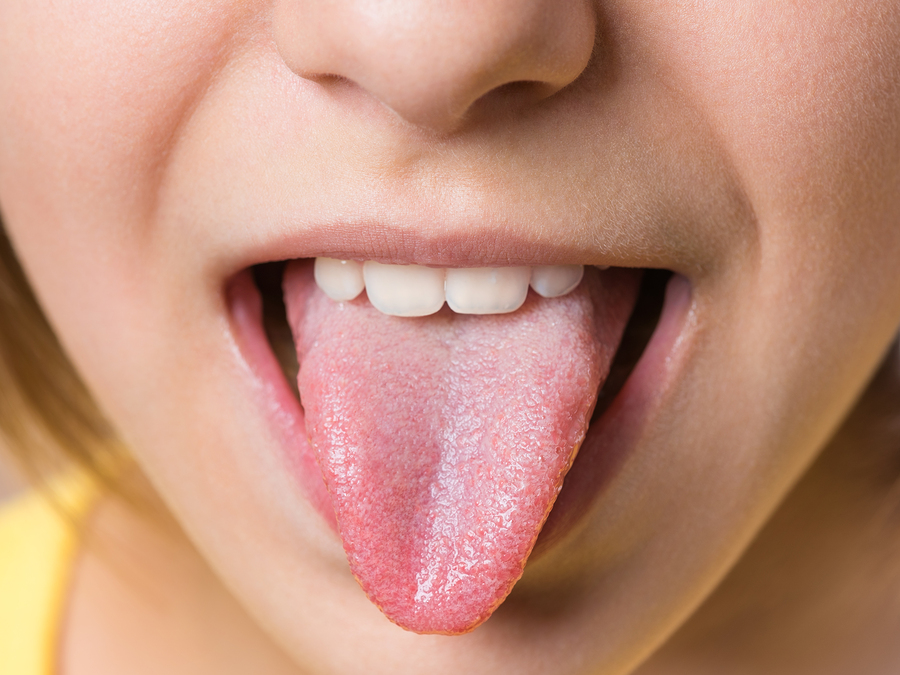Have you ever noticed how and where your tongue naturally sits in your mouth when you’re not talking or chewing? If you’re like most people, the answer is probably no. Yet the natural resting position of your tongue is an important clue to what’s going on in your mouth and may be the cause of some unexplained symptoms.
Does Your Tongue Press Against the Front of Your Mouth?
This is not the ideal position for the tongue at rest. Some people find that their tongue naturally pushes towards the front of the mouth, often protruding between the upper and lower teeth, at rest or when swallowing or speaking. This is called “tongue thrust.” It’s very common in childhood but most children grow out of it with no lasting consequences. However, if it persists into adulthood, it can cause problems. This is especially true when a person has a habit of pressing the tongue against the teeth while swallowing.
Over time, tongue thrust can push the teeth out of alignment, leading to an “open bite” where there’s a visible gap between the upper and lower teeth when the mouth is closed. Tongue thrust may also be responsible for some speech impediments, such as the incorrect pronunciation of the “s” and “sh” sounds.
Does Your Tongue Rest on the Bottom of Your Mouth?
This low rest tongue posture is also not the ideal position for the tongue at rest. Some people are in the habit of keeping their tongue against the bottom of the mouth or pressed up against the front bottom teeth.
This tongue posture is associated with chronic mouth breathing, tongue ties, and large tongues. If there’s enough pressure from the tongue onto the teeth, it can also lead to a bad bite like a crossbite or an underbite.
Does Your Tongue Sit Behind Your Upper Front Teeth and Make Contact with the Roof of the Mouth?
If so, good news! This is the ideal resting posture for the tongue. Ideally, the tip of the tongue should rest behind (not on) the top front incisors while the top of the tongue should press against the roof of the mouth. At the same time, the lips should be together and the teeth should be apart with the jaw joint relaxed.
This position prevents the tongue from placing force on the teeth, which can move them out of alignment over time, and naturally promotes breathing through the nose (rather than the mouth).
Why Tongue Position Matters and What to Do About It
Although it seems like a small thing, the position of your tongue at rest does matter. When it’s not in the ideal position, it can lead to the issues listed above as well as problems with the jaw joint (TMJ), drooling, trouble swallowing, snoring, and incorrectly developed facial features.
If you discover that your tongue doesn’t naturally rest in the ideal position and you have any of the common symptoms listed above, speak to your dentist about it and discuss your options. Orthodontics may help if the shape of the mouth is leading to improper tongue posture, and speech pathology can help if the tongue is interfering with correct articulation. There are also simple exercises you can do to get into better habits and “train” your tongue to sit in the right place, and these may be enough. Just make sure not to ignore it, because it can cause problems over time.

 Dr. Ami Barakat
Dr. Ami Barakat